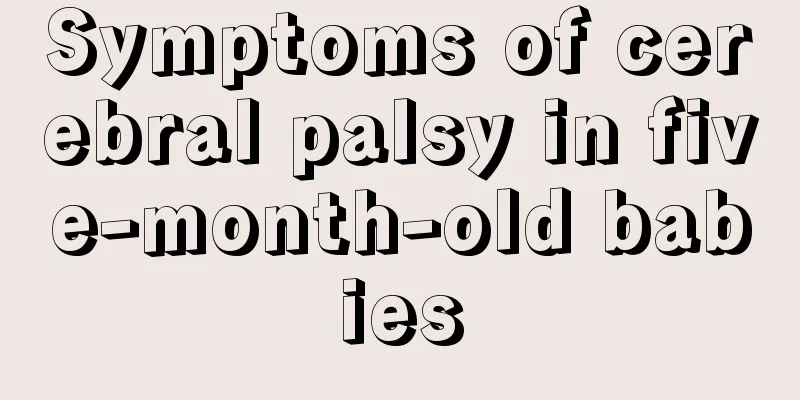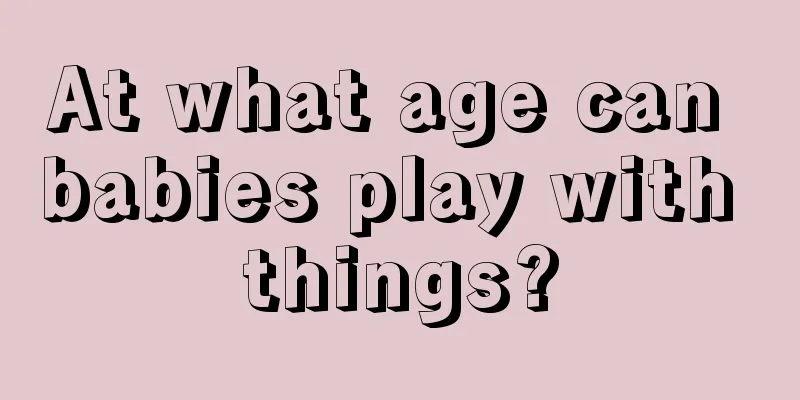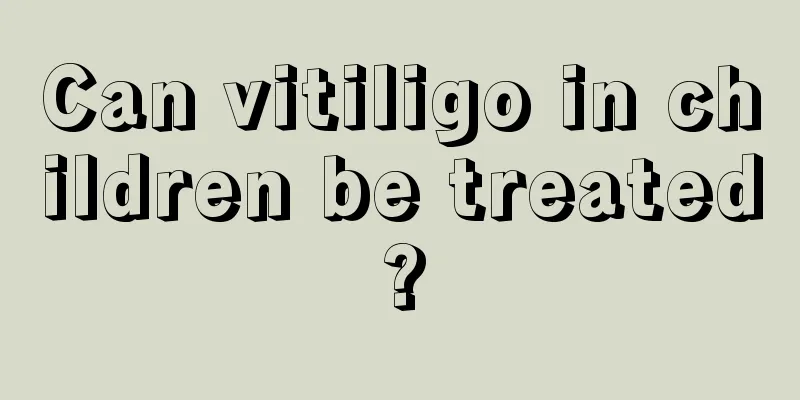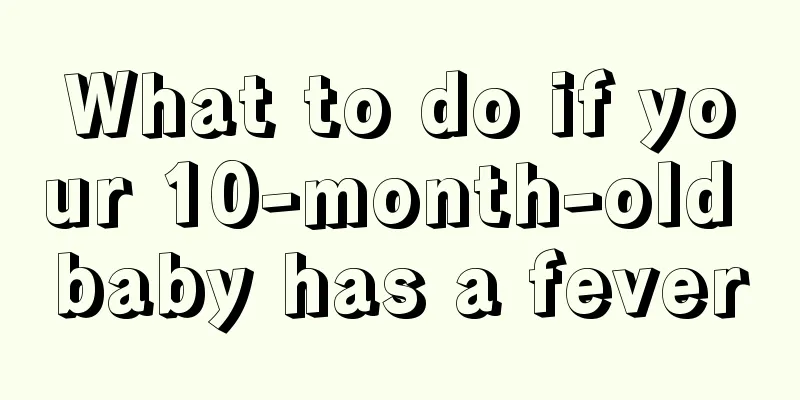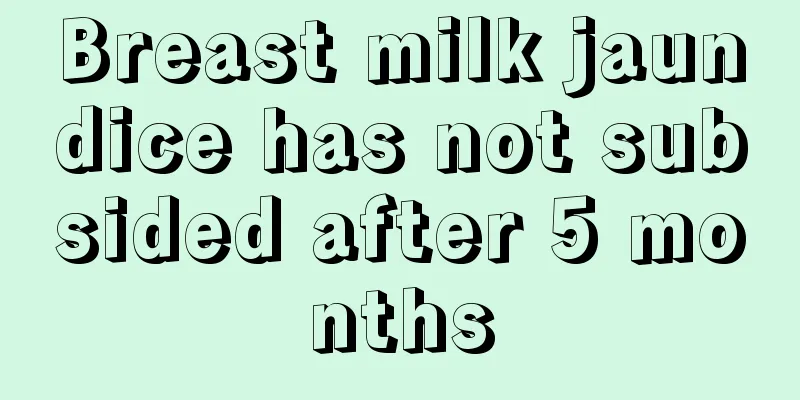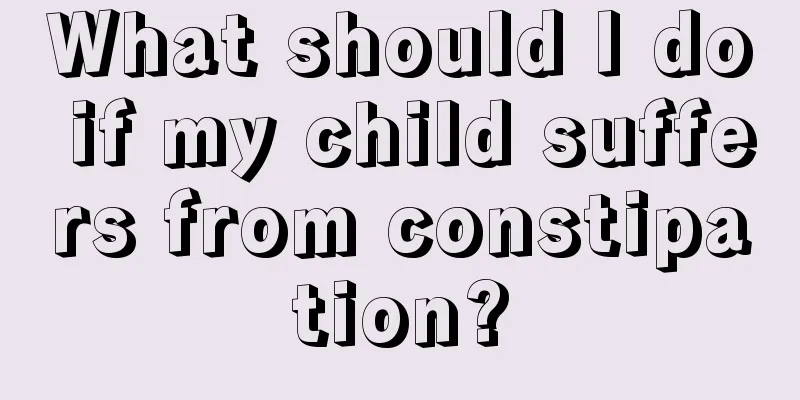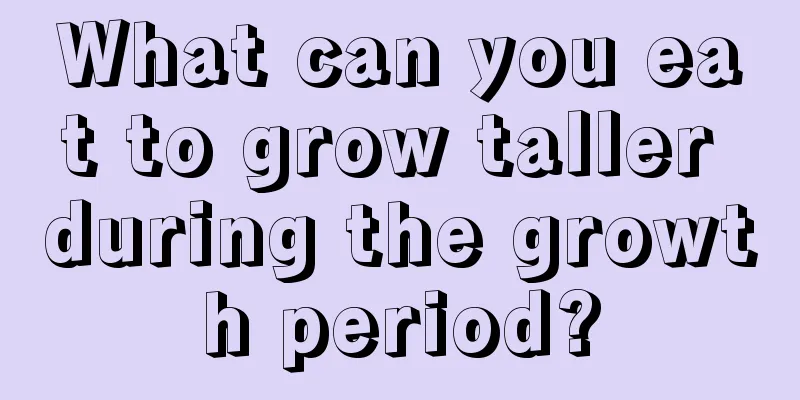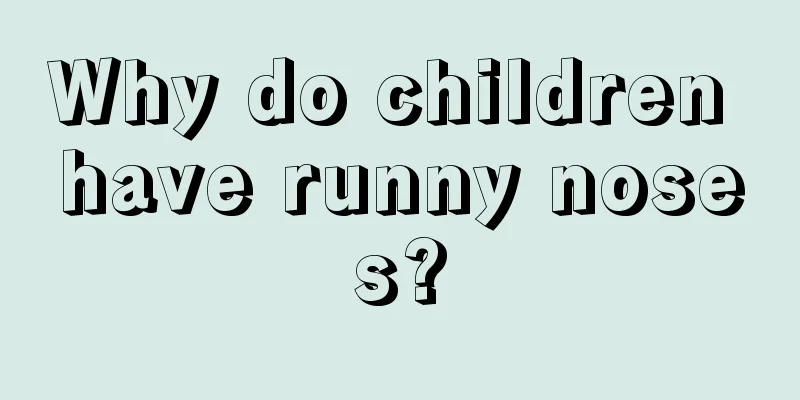What should I do if my child has a fever and suddenly has convulsions?
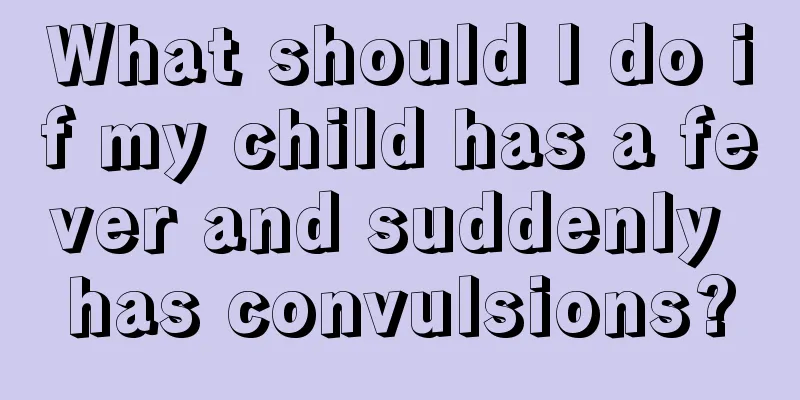
|
Babies have relatively weak resistance, so they can catch a cold easily. Fever and cough are common occurrences. I wonder if mothers have noticed that some babies will suddenly twitch their bodies or local parts of their bodies after having a fever, and some may even become unconscious, which is simply terrifying for mothers. If this happens, parents must not be at a loss. So what should we do when encountering this situation? 1. What is heat cramps Febrile convulsions are a phenomenon similar to epilepsy in young children caused by a fever exceeding 38°C. It is the most commonly diagnosed and treated disease in pediatric neurology clinics! It occurs because the function of the brain nerves of young children is still not very stable during their growth, and will cause convulsions as the body temperature rises. It usually occurs on the first day of a fever. Convulsions often occur when the body temperature rises sharply, and in a few cases, they occur when the fever subsides. Most cramps last anywhere from a few seconds to ten minutes, but a few may last longer than ten minutes. It is rare for the disease to occur more than 2 times in a row. This spasm is mostly caused by acute infection, especially viral upper respiratory tract infection (such as enterovirus). There will be no neurological symptoms left after the convulsion, and there will be no limb paralysis or weakness, but there will be drowsiness within 1 to 3 hours, and then everything will return to normal. But because it happens suddenly, parents are often at a loss as to what to do and are left with a horrific experience. Febrile seizures are generally divided into simple seizures and complex seizures. As the name suggests, simple seizures are easier to solve, while complex seizures are the opposite. 2. Simple heat cramps 1. The attack duration is less than 15 minutes; 2. Symmetrical whole-body convulsions of both hands and feet, including eyes rolling up and lips turning purple; 3. Only one attack occurs within 24 hours and there is no recurrence. Complex febrile seizures If a child's seizure lasts too long, one hand or one foot twitches, or the seizures occur repeatedly within a day, these are called complex febrile seizures, which are relatively serious. 3. Why are children prone to heat cramps? This is because when a child has a fever, the metabolism, oxygen consumption and blood flow of nerve cells will change, and the child's central nervous system will be in a state of over-excitement. This "excitement" will affect the child's immature brain tissue - the "thalamus", causing it to produce strong discharges and transmit to other parts of the brain. At this time, we will see the child suffer from convulsions. 4. Which type of baby is prone to heat cramps Heat cramps usually occur between 9 months and 5 years old, and are most common in the age group of 1 to 1.5 years old! It is rare after the age of 5. The incidence rate in children under 5 years old is about 3-5%. It is more common in Europe and the United States than in Asia. The incidence rate in China is about 3%, and it is slightly more common in boys than in girls! Heat cramps are actually related to personal constitution and genes, and are hereditary. The proportion of children with heat cramps is about 2% to 5%. 30% of the children had a family history of febrile convulsions. In other words, it is not a wrong concept that children will have heat cramps if their temperature is too high! In addition to genetic factors, there are other influencing factors: if a pregnant woman smokes, the fetus will be more likely to suffer from heat cramps in the future; children with iron deficiency anemia are also prone to it, because iron is important for the stability of brain function. Children who have been hospitalized in the nursery for more than 30 days due to illness are also a high-risk group. Simple heat cramps will heal on their own after the baby is over 6 years old! 5. What should I do if my baby suddenly has a febrile convulsion? In fact, febrile convulsions in infants and young children will stop on their own and will not leave any sequelae, and no special treatment is required! But the most important thing is to find out the reason behind the fever. In short, what children with febrile cramps need to be treated for is not the febrile cramps themselves, but to control the fever and find out the cause behind the fever and treat it. But when parents first encounter this situation, they always panic and don't know what to do. The following are correct and concise emergency treatment methods: Emergency treatment principles: maintain airway patency and prevent external damage As long as the baby's skin is not purple, there are no concerns about collision injuries, there is no vomiting, and there are intermittent breathing movements, there is no immediate danger. You can help your baby lie down on his side to facilitate the flow of oral secretions and avoid choking. You can also tilt the head and neck slightly backward to keep the airway open. Remove obstacles nearby and loosen clothes to create a safe environment. Remember to stay calm and don't panic! It is difficult to stop a baby's convulsions with external force, so do not force your fingers or anything else into his mouth, because the tongue is rarely bitten during an attack, and this action will only cause harm to both parties. Also, do not shout or shake hard in an attempt to stop the convulsion. Parents only need to stay by their side to prevent other accidental injuries from happening, and can do the following depending on the situation: Usually the baby's breathing will be smooth afterwards and no special treatment is needed for the time being. You can go directly to the doctor for examination to find out the cause of the convulsion. Continuous and intermittent convulsions for more than five minutes, or weak or even stopped breathing after convulsions, may indicate a serious risk of hypoxia! Therefore, oxygen or artificial mouth-to-mouth resuscitation should be given on the spot, and the patient should be sent to a doctor for treatment immediately. 6. After the convulsion, you still need to see a doctor for detailed examination After the convulsion, the cause of the fever still needs to be carefully examined and treated. This is also the main purpose of seeking medical treatment, to find out whether there are any special causes other than the common cold (upper respiratory tract infection). For example, otitis media, urinary tract inflammation, encephalitis, and fatal sepsis, etc., can be detected and treated early, which is best for children. |
<<: What are the symptoms of vitiligo in children?
>>: What should I do if my child’s tonsils are inflamed and swollen?
Recommend
Baby cough with phlegm
With the continuous improvement of modernization,...
What should I do if my child has white bubbles on his tongue?
During childhood, children's body functions a...
What are the symptoms of sinusitis in children?
Compared with adults, young children's bodies...
Clinical manifestations of acute tonsillitis in children
In the case of acute tonsillitis in children, we ...
What are the symptoms and treatments of rhinitis in children?
Children's rhinitis mainly occurs in some acu...
Ways to improve physical fitness for children
Everyone should constantly enhance their physical...
How to quickly relieve bloating in children?
If a child has bloating, the pressure inside the ...
What can children drink to grow taller?
Many children want to have a perfect height. Nowa...
Children's daily schedule
Children are in the growth stage, and their sched...
What to eat for children to nourish their brains
With the continuous development of modern society...
What is the reason for redness in children's genitals
Many children will have some redness and swelling...
Will babies' allergies heal on their own?
In the process of raising children, parents will ...
The harm of general anesthesia surgery to children
Children's physical health is very important,...
How to treat mumps in children? Treatment of mumps in children
Mumps is a common and frequently occurring diseas...
How to treat bedwetting in children? These remedies are effective
Many parents think that it is normal for children...
